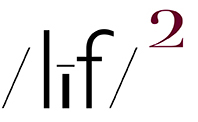(embiggenable) • Polamatic app / iPhone
(embiggenable) • Polamatic app / iPhone
(embiggenable) • Polamatic app / iPhone
I have always held forth, re: on the topic of The Medium of Photography and Its Apparatus*, that the single most defining characteristic of the medium that distinguishes it from the other visual arts is its relationship to and as cohort of the real. That written, since its inception, photography has had an on-again / off-again relationship with the real.
The very first of the medium's practioners pointed their cameras at the real. I suspect that many did so simply, as Garry Winogrand said, "... to find out what something will look like photographed." Be that as it may, some of those practioners must have considered what they were doing was making art inasmauch as the Art Establishment, primarily painters, found it necessary to declare that photographs were not art since it was just a mechanistic activity.
In response to that accusation-which arose from the declaration that, to be art, what is created must exhibit "the hand of the creator"-there emerged the Pictorial Movement. Picture makers who, while they may have been started their picture making by pointing their cameras at the real, worked feverishly to modify the resulting realism with painterly effects on the surface of a print-staining / coloring, extreme soft focus, adding brush strokes, making collages, et al-to make obvious the hand of the creator. Depicting the real world was out of favor.
In response to Pictorialism, there emerged Group f/64. A group of photographers who, as implied by the use of the photographic descriptor f/64, made photographs which were sharp-with great DOF-carefully composed pictures that were intended to depict the real world. Their Manifesto stated:
The members of Group f/64 believe that photography, as an art form, must develop along lines defined by the actualities and limitations of the photographic medium, and must always remain independent of ideological conventions of art and aesthetics that are reminiscent of a period and culture antedating the growth of the medium itself.
The Manifesto also included a statement I find to be very interesting:
Group f/64 is not pretending to cover the entire spectrum of photography or to indicate through its selection of members any deprecating opinion of the photographers who are not included in its shows. There are great number of serious workers in photography whose style and technique does not relate to the metier of the Group.
Since the inception of the F/64 movement, it is reasonable to believe that the group's doctrine for making photographs held sway over the picture making world. That is not to write that Pictorialist-like tenets and practice disappeared but rather they continued as a minor subset of the picture making world. It is worth noting that the early F/64 practioners pointed their cameras, for the most part, on the Natural World. However, over time and especially with the emergence of the New Color Photography practioners, the depicted referents shifted toward the urban world and humankind's impact on the Natural World.
All of that written, I believe that, since the beggining of the digital age of photography, there has been a shift away from the F/64 aesthetic, wherein the real world reigns supreme, to that of re-emergent Pictorialism wherein fantasty and the imaginative reign supreme. That written, the picture making concepts of F64-ism and Pictorialism are of concern to a relatively small percentage-"serious" picture makers-of the pictue making universe.
As a picture maker whose pictures are 99% F/64-ish, I wonder if the shift to Pictorialist-like picture making is simply a by-product of real world we now inhabit. A real world wherein the real world-for many-is becoming increasingly more difficult / stressful to bear. In such a world fantasy and the imaginative is an attractive alterative to / escape from carrying around such a real world heavy load. However, I am not yet ready to escape to that world. Although ...
...while captions for the pictures in this entry could go along the lines of, "the view of things in my hallway / doorway to front hall / lamp and other things", those captions should also include the words "sorta like" or "kinda like" before the word "view".
As a fine example of what I would consider to be the New Pictorialism, check this out
*a complex structure within an organization or system, NOT the technical equipment or machinery needed for a particular activity or purpose.